 |
|
BACKPACKING THE DARDANELLES
May 2004: Traveling through the Sierra backcountry
Located in the Carson-Iceberg Wilderness Area, the Dardanelles Cone defines a remote and relatively lightly traveled region of the mighty Sierras. Located about halfway between Yosemite National Park and Lake Tahoe, the region features massive granite slabs, flat-topped peaks, ancient trees, and alpine streams. Spring brings a fabulous display of high-altitude wildflowers.
Access to the Dardanelles is via Highway 108 and up the long, dirt Clark Fork Road.
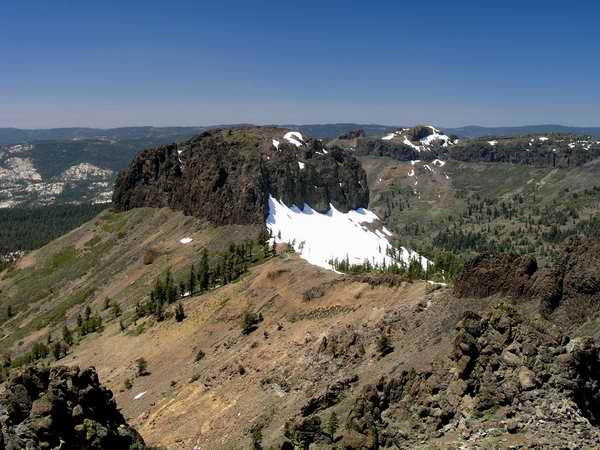
The Dardanelles Cone, elevation 9,527 feet, stands alone like a giant plug in the Sierra landscape.
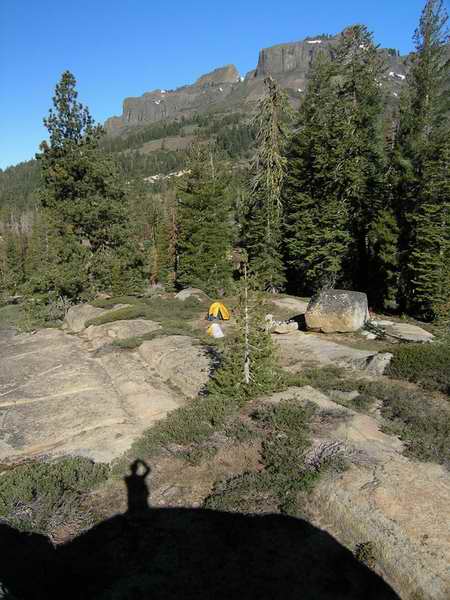
Our favorite McCormick campsite is only a mile or so in from the trailhead. From there, we made day trips around and to the top of local peaks. In late May, there can be considerable snow in the area. But with a warm spring, the wildflowers are out early.
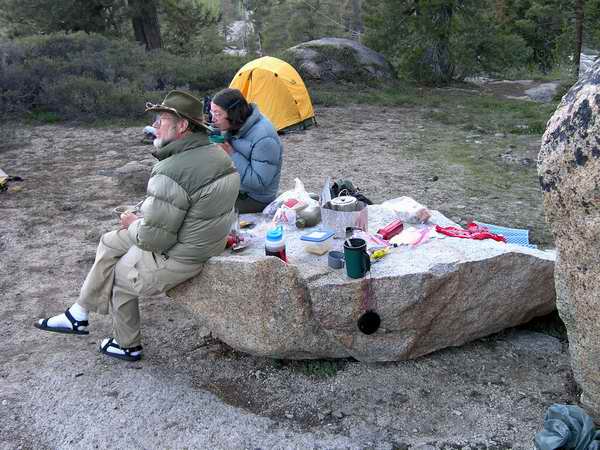
It can also be cold in May, especially when the sun drops behind the Western peaks. A cup of hot tea goes down especially well. This campsite has a nice granite table for our kitchen.
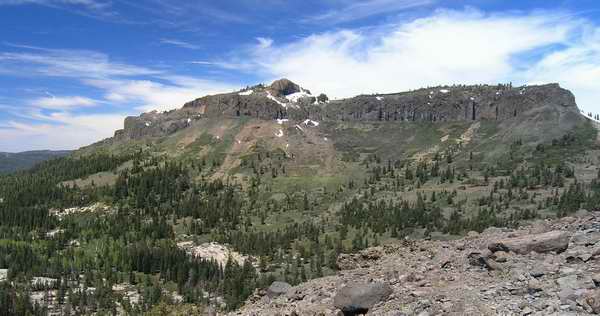
Day hikes provide the opportunity to top several nearby peaks while going light — just water, lunch, and a camera. The long view of the western Dardanelles peaks.

Looking north along the western peaks.
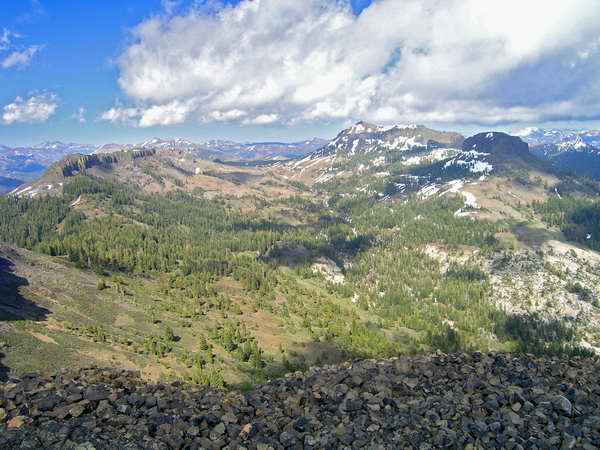
McCormick Creek canyon
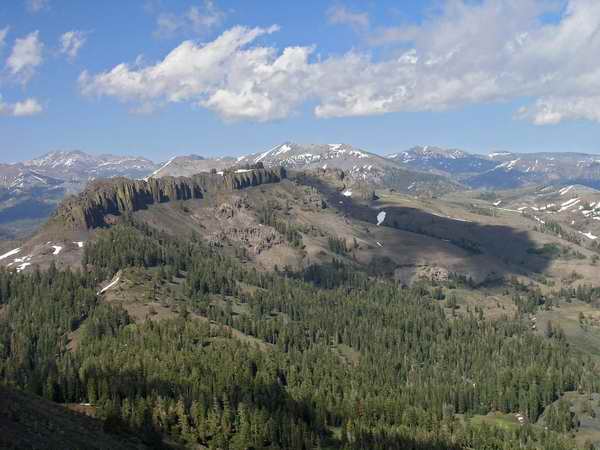
Northern panorama
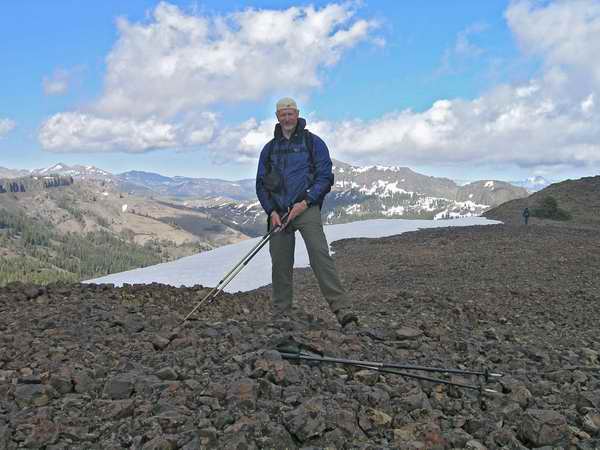
Topped out at 8,800 feet on one of the local peaks, after a 1,360-foot climb from camp.
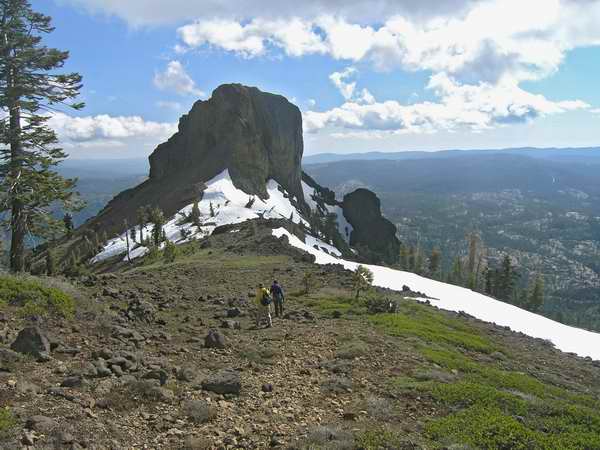
Walking down the spine of the Western Cones.
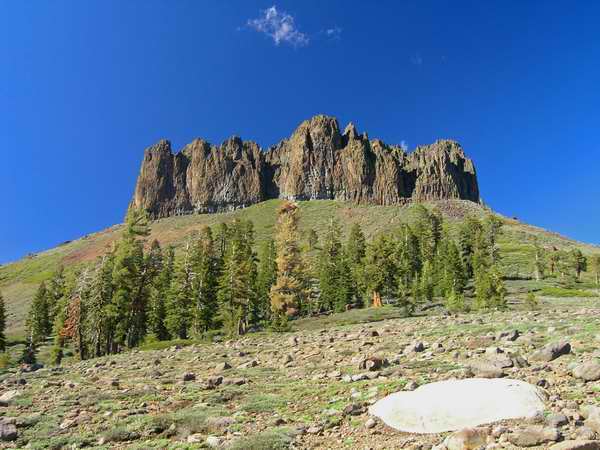
A morning view of the Middle Cone from the southeast. A relatively easy walk up to the base of the cone, through forest and rocky ground. Patches of snow here and there, but few wildflowers.
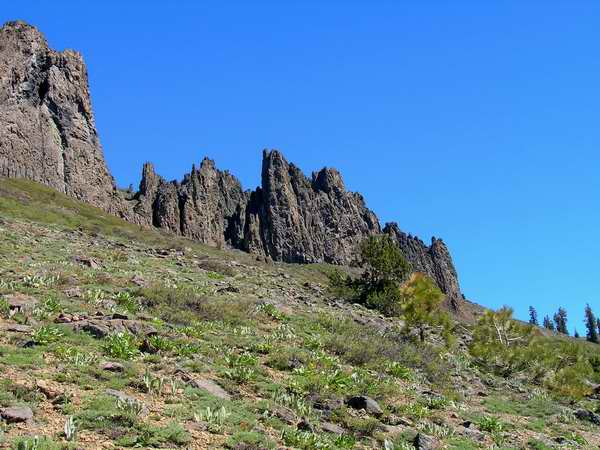
Heading for the Northern Dardanelles Cone; we pass over the Eastern flank of the Middle Cone, then hike down to and across Drew Creek. The climb north up a ridge line leads to the Northern Cone.

Fine view of the Dardanelles Cone's north side.
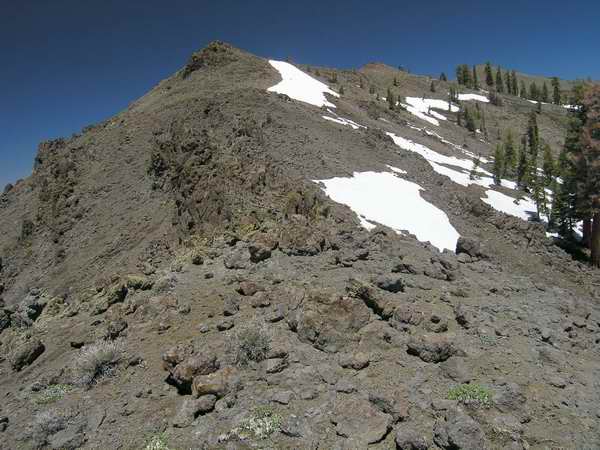
Scrambling up the rocky ridge line toward the Northern Cone. Loose scree calls for careful footing.
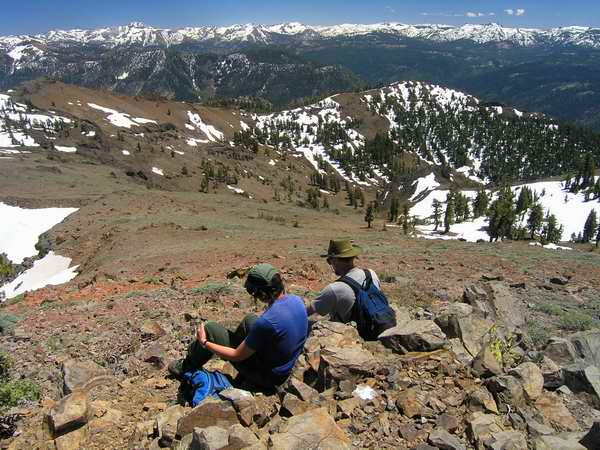
Taking a short break and enjoying a fine view of the Sierras.
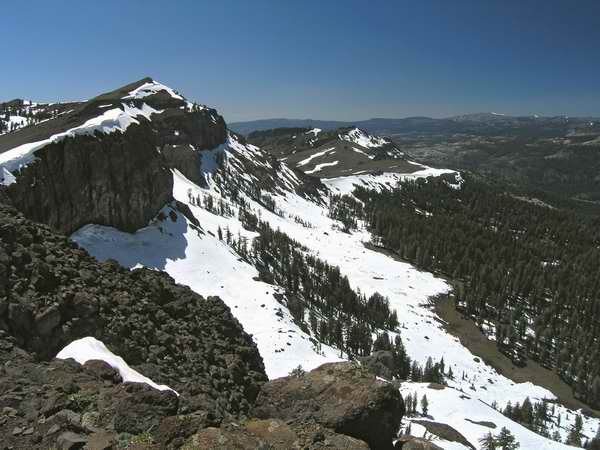
North side of the Dardanelles Cone drops down into the Jenkins Creek canyon.
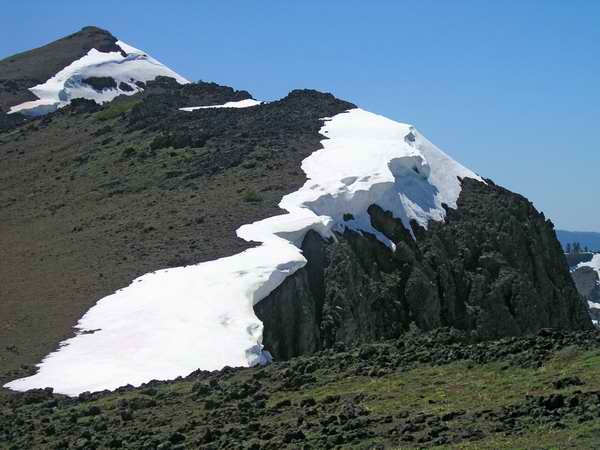
Last snows rim the northern edges.
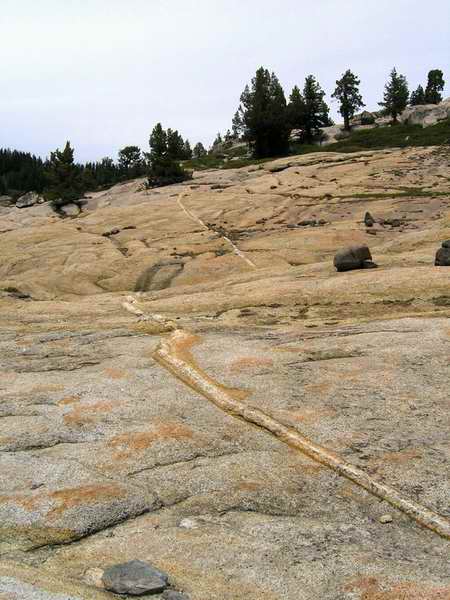
A giant granite slab with veins of what looks like quartz.
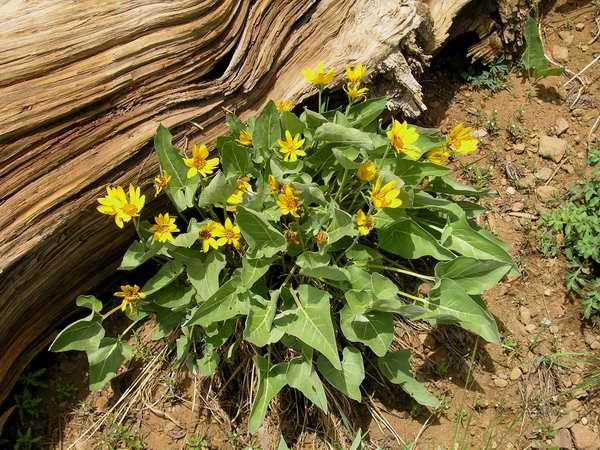
Arrow-leaf Balsamroot in bloom.
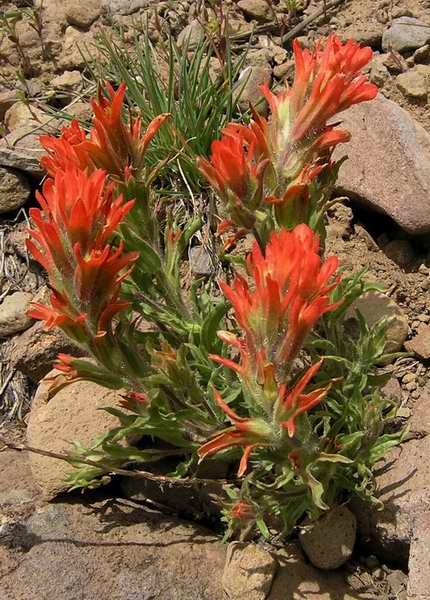
Paintbrush is always a welcome sight.
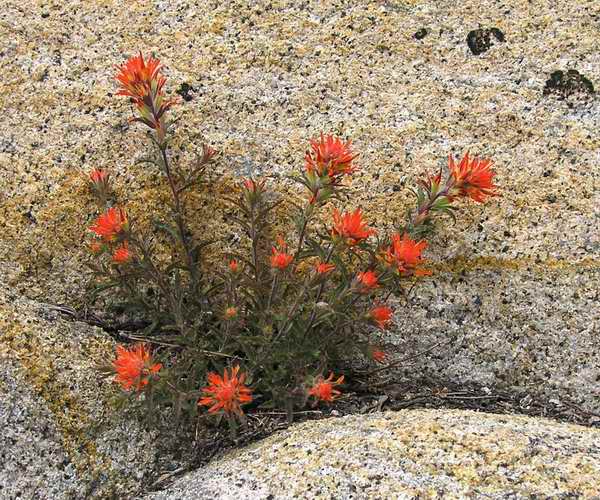
Paintbrush comes in an astounding variety.
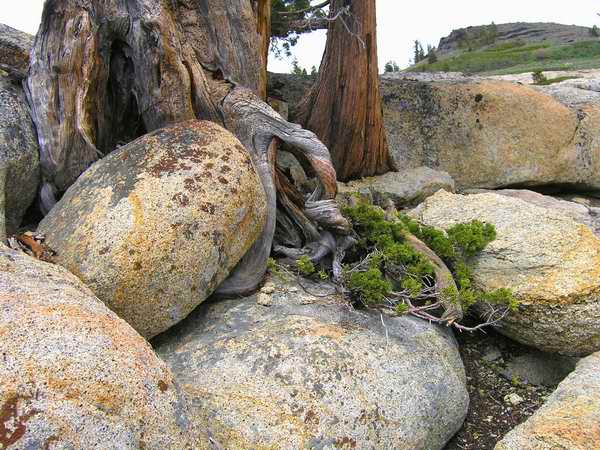
Ancient trees and stone.
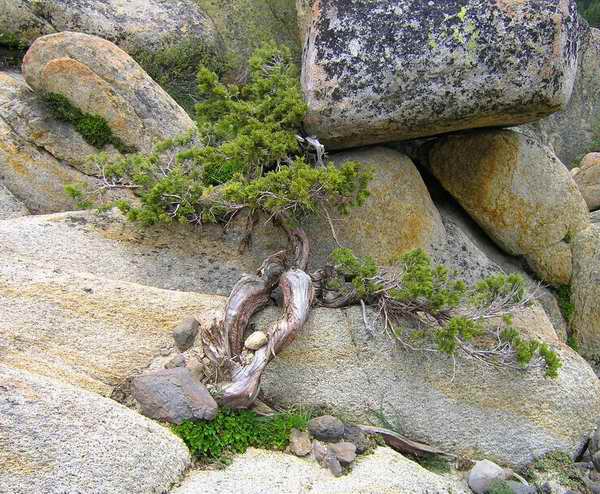
Life is hard in the high Sierras.
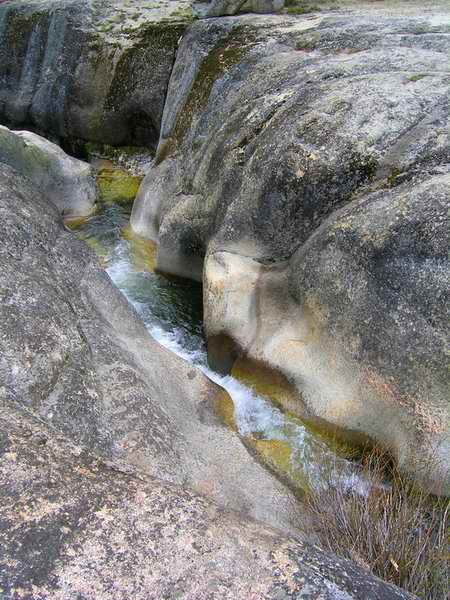
Granite gives way of the centuries to water.
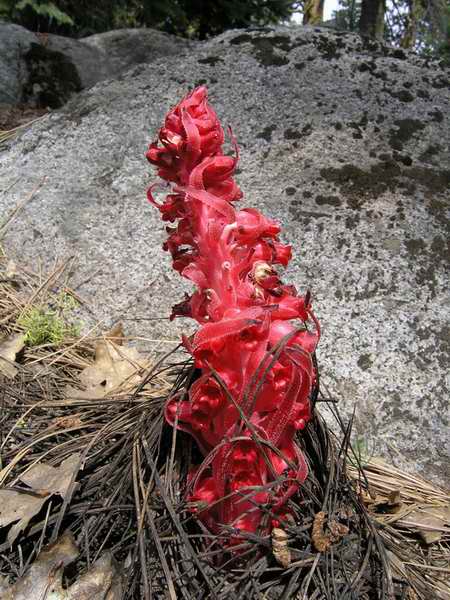
In the early spring, Snow Plants (Sarcodes sanguinea) pop up in snow—or soon after it has melted away.